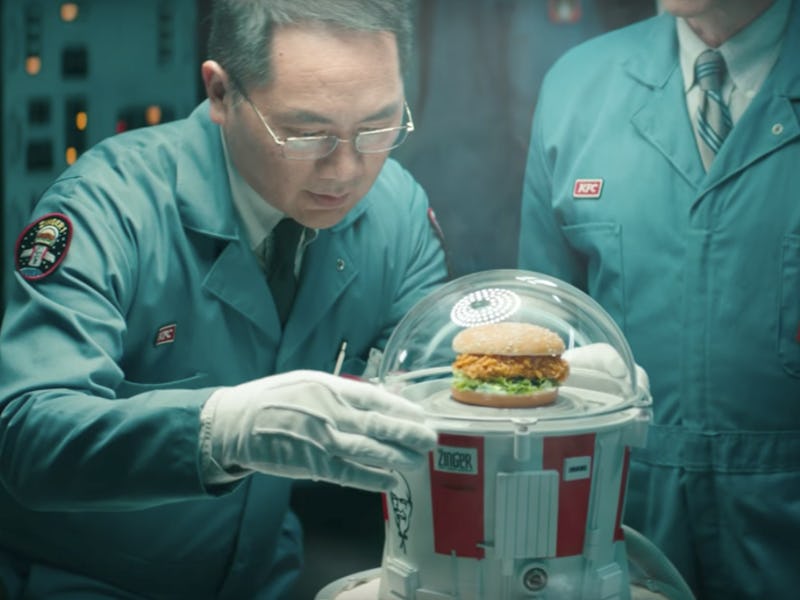On Tuesday, it was confirmed that Kentucky Fried Chicken would attempt the impossible: The company would make chicken fly. Specifically, World View, a company that specializes in high-altitude travel, announced that it would help KFC to launch one of its new spicy, crispy Zinger sandwiches into the Earth’s stratosphere. The deep-fried snack won’t be going up in a conventional rocket — it’s going up in one of World View’s “Stratollite” balloons. It’s a wise vehicle choice on KFC’s part: Flying in the lightweight, helium-powered Stratollite is much less expensive than traveling in a fuel-guzzling rocket, and it doesn’t require a government license, to boot.
KFC and World View plan to send up the sandwich, part of a 100-pound payload, in a Stratollite (as in stratosphere satellite) during a launch window that opens on June 21.
The Zinger will shoot for the outer edge of the stratosphere, the second major layer of the atmosphere, which begins anywhere from 5 miles to 11 miles above the surface of the Earth, depending on where on the globe it is measured (it’s lowest at the poles). Launching from an isolated area outside of Tucson, Arizona, the balloon-riding sandwich will ascend some 31 miles above the ground.
The major difference between World View’s Stratollite and regular high-altitude balloons is its ability to travel a range of trajectories. While regular high-altitude balloons have traditionally been more difficult to steer, the Stratollite can stay put in a single place in the sky, or it can circumnavigate the globe.
Once the Zinger goes up, using its solar panels to power its steering mechanism, the plan is to have it linger over the southwestern United States for four days, though World View’s chief technology officer and co-founder, Taber MacCallum, told GeekWire on Tuesday that the sandwich’s time in the sky could be extended, if all goes well.
The Zinger’s flight will be the Stratollite’s first attempt at a multi-day cruise for a flight carrying a payload (previous flights have only lasted several hours). At some point during the flight, Stratollite will beam down live HD video from a height of 60,000 to 75,000 feet. When the mission is over, the Zinger will detach from the Stratollite, gliding back down to the designated landing zone with the help of a parachute.
The flight plan calls for the balloon to loiter over the southwestern U.S. for four days, but that time frame could be extended if the balloon (and the sandwich) remains in good shape, MacCallum said. At the end of the mission, the payload would detach from the balloon and glide back to a designated landing area at the end of a steerable parachute.
KFC's Zinger: The first chicken sandwich in space.
The inevitable question is, of course, what will happen to the sandwich? Will the Zinger filet’s “world-famous” crispiness, together with its tangy mayo and soft leaves of lettuce, last the trip to the Earth’s outer reaches? Reporting from a press conference, Verge reporter Loren Grush tweeted on Tuesday that “the payload includes the chicken sandwich flying system that keeps the chicken looking good.” It remains to be seen, however, whether the sandwich will be considered edible after being exposed to the high radiation levels in the stratosphere.
Regardless of its edibility, if the chicken filet’s flight goes according to plan, it’ll show that the Stratollite is capable of flying and carrying payloads to the stratosphere for periods longer than a single day. World View has stated that the vehicle could eventually be used to send military and commercial imaging technology to the stratosphere, where it can collect data for months at a time.
For now, KFC’s stunt serves as a proof of concept, which, World View CEO Jane Poynter pointed out in a teleconference on Tuesday, is not as silly as it seems.
“If you can fly a chicken sandwich to the edge of space … you can fly really just about anything,” she said.
It wouldn’t be the first time meat has gone into space for publicity reasons. In 2014, East London’s Tayyabs Punjabi restaurant sent one of its famous (and delicious) lamb chops into space.
